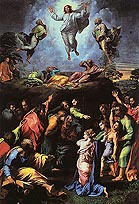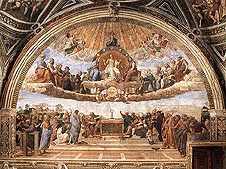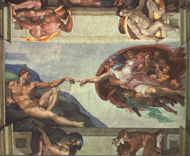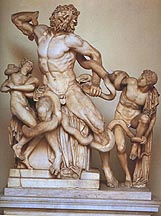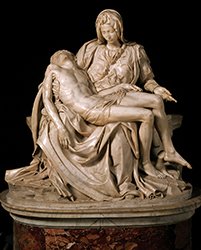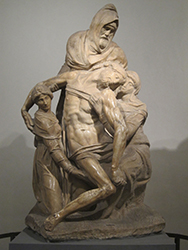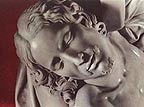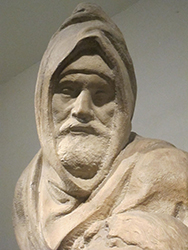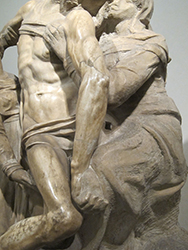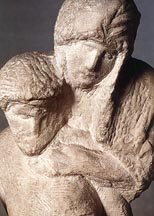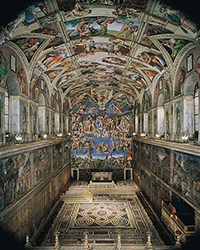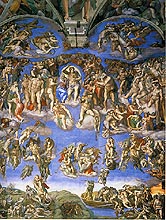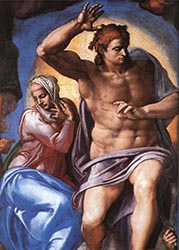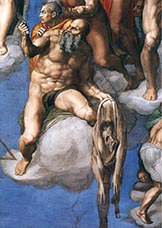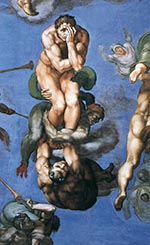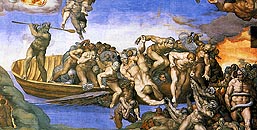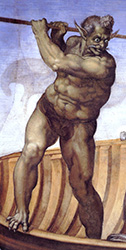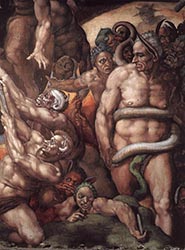And after six day Jesus taketh unto him Peter and James, and John his brother, and bringeth them up into a high mountain apart;
2 And he was transfigured before them. And his face did shine as the sun: and his garments became white as snow.
3 And behold there appeared to them Moses and Elias talking with him.
4 And Peter answering, said to Jesus: Lord, it is good for us to be here: if thou wilt, let us make here three tabernacles, one for thee, and one for Moses, and one for Elias.
5 And as he was speaking, behold a bright cloud overshadowed them. And lo, a voice out of the cloud saying: This is my beloved Son, in whom I am well pleased: hear ye him.
6 And the disciples hearing, fell upon their face, and were very much afraid.
7 And Jesus came and touched them: and said to them, Arise and fear not.
8 And they lifting up their eyes saw no one but only Jesus.
9 And as they came down from the mountain, Jesus charged them, saying: Tell the vision to no man, till the Son of man be risen from the dead.
10 And his disciples asked him, saying: Why then do the scribes say that Elias must come first?
11 But he answering, said to them: Elias indeed shall come, and restore all things.
12 But I say to you, that Elias is already come, and they knew him not, but have done unto him whatsoever they had a mind. So also the Son of man shall suffer from them.
13 Then the disciples understood, that he had spoken to them of John the Baptist.
14 And when he was come to the multitude, there came to him a man falling down on his knees before him saying: Lord, have pity on my son, for he is a lunatic, and suffereth much: for he falleth often into the fire, and often into the water.
15 And I brought him to thy disciples, and they could not cure him.
16 Then Jesus answered and said: O unbelieving and perverse generation, how long shall I be with you? How long shall I suffer you? bring him hither to me.
17 And Jesus rebuked him, and the devil went out of him, and the child was cured from that hour. |
